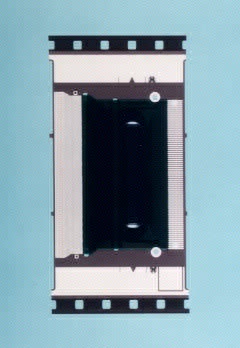Hitachi, Ltd. (TSE: 6501) today announced the HD66339 64-grayscale TFT LCD driver with 480
outputs-the industry's largest number-for driving SXGA*1 and UXGA*2 high-definition TFT LCD
panels. Sample shipments will begin in June 2000 in Japan.
The demand for XGA*3, SXGA, and UXGA high-definition TFT LCD panels for notebook PCs and
space-saving desktop PCs and monitors has been growing in recent years, and can be expected
to increasefurther in the future.
Hitachi has previously released the 384-output, 64-grayscale HD66323/325 and the 384-output,
256-grayscale HD66352 as data drivers for XGA and SXGA color TFT LCD panels, and is now
extending the TFT driver lineup with the release of the 480-output, 64-grayscale HD66339 for
SXGA and UXGA panels.
The HD66339, incorporating 480 data line drive outputs comprising 6-bit D/A converters and
op-amps, is an ideal data driver for SXGA and UXGA high-definition color TFT LCDs.
The driver accepts 6-bit digital data per pixel and generates voltages for 64 grayscales by
means of the D/A converters, to achieve a 260,000-color display. With the 480 outputs of
the HD66339, SXGA LCD panel data line drive can be handled by eight HD66339 chips, and UXGA
by ten, compared with ten and 13 chips, respectively,in the case of current 384-output devices.
This enables the number of components to be reduced, and,with UXGA display in particular, makes
it possible to design an efficient LCD panel that uses all the pins, in contrast to the
inefficient situation with 384-output and 192-output devices where some pins are not used,
thereby enabling system costs to be cut.
The internal logic circuits operate at a low voltage of 2.3 V, and the interface to external
circuitssuch as an LCD drive timing controller has also been made operable at 2.3 V as a CMOS
interface, enabling overall system voltage and power consumption to be reduced. The package
used is a TCP*4.
Future plans call for extension of the product lineup in line with the trends in the TFT panel
display market.
Notes: 1. SXGA (Super Extended Graphics Array): A display definition standard.
The display comprises 1,280 x 1,024 dots.
2. UXGA (Ultra Extended Graphics Array): A display definition standard.
The display comprises 1,600 x 1,200 dots.
3. XGA (Extended Graphics Array): A display definition standard.
XGA is a trademark of IBM Corporation, indicating a display comprising
1,024 x 768 dots.
4. TCP (Tape Carrier Package): A package mounted on a thin-film tape,
allowing ultra-thin type mounting (1 mm or less).
< Typical Applications >
TFT LCD panel applications (notebook PCs, space-saving desktop PCs, monitors)
< Price in Japan > (For Reference)
Product Code Sample Price (Yen)
HD66339 1,200
< Specifications >
Item Specification
Function 64-grayscale TFT data driver
Power supply voltage 2.3 V to 3.6 V (logic)
6.5 V to 10.0 V (analog)
Operating temperature -30 to +75¡î
Package 541-pin TCP
Data input 36-bit digital input (6 bits x 6 pixels)
Display drive outputs 480 outputs
Output voltage deviation ± 2 mV (typ.: effective value)
Max. clock frequency 55 MHz (Vcc = 2. 7 V to 3.6 V)
45 MHz (Vcc = 2. 3 V to 2.7 V)
Other functions Offset cancellation
Dot inversion drive
n-raster-row inversion drive
Data inversion function
|
